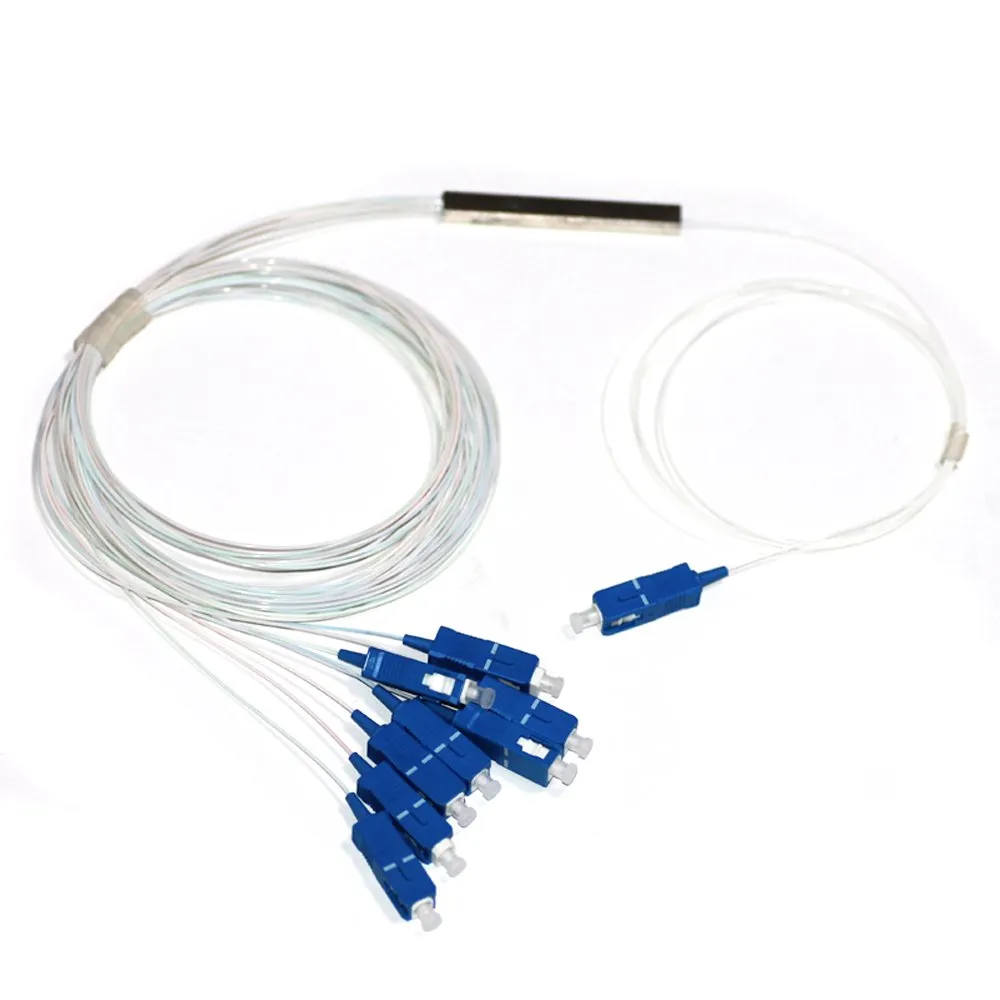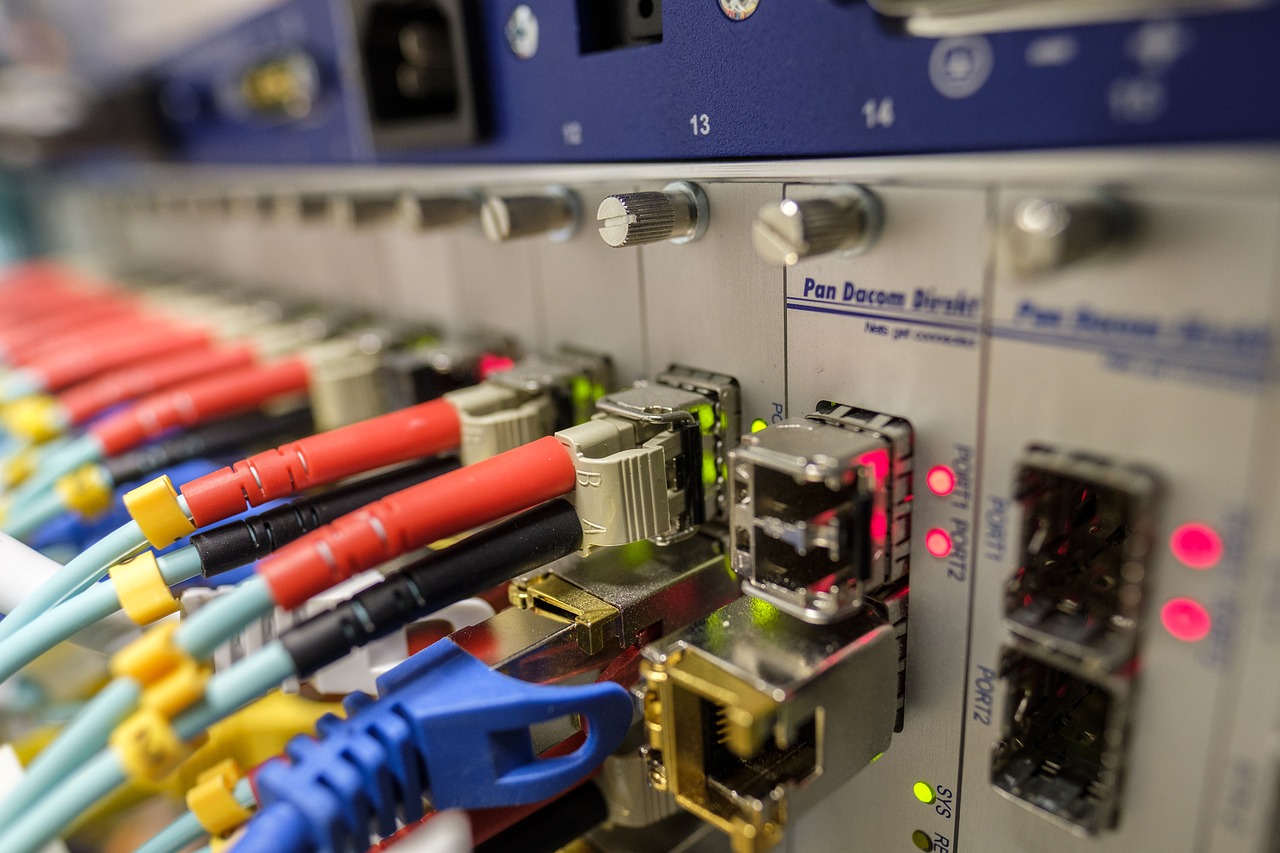The Future of Singlemode 1×8 Blockless Fiber PLC Splitters

Introduction to the World of Fiber Optics
The Journey of Fiber Optics
Fiber optics, a revolutionary technology that has transformed the way we communicate and transmit data, has a captivating journey from its inception to the present day. Dating back to the early 19th century, the concept of guiding light through transparent fibers was merely theoretical. However, it wasn't until the 1950s that scientists began experimenting with practical applications for fiber optics. Fast forward to today, and fiber optics have become an indispensable part of our modern world.
From Past to Present
The evolution of fiber optics has been nothing short of remarkable. What started as a mere scientific curiosity has now become the backbone of high-speed internet, telecommunications, and various other industries. The journey from early experiments to the widespread deployment of fiber optic networks has been marked by continuous innovation and technological advancements.
Why Fiber Optics Matter
Fiber optics serve as the cornerstone of modern communication infrastructure, playing a pivotal role in enabling seamless connectivity across the globe. The significance of fiber optics extends beyond just transmitting data; it embodies reliability, efficiency, and scalability.
The Backbone of Modern Communication
In today's digital age, where information travels at lightning speed, fiber optics form the very foundation of our interconnected world. They facilitate real-time communication, support high-bandwidth applications, and underpin critical systems such as telemedicine, online education, and e-commerce. Without fiber optics, the seamless exchange of information that we often take for granted would not be possible.
The Role of Singlemode 1x8 Blockless Fiber PLC Splitters
Fiber optics have paved the way for a multitude of innovations, and one such advancement is the integration of Singlemode 1x8 Blockless Fiber PLC Splitters. These cutting-edge components play a crucial role in ensuring the seamless transmission of data across vast networks.
Understanding Blockless Fiber
The evolution of blockless fiber represents a significant leap in the field of optical communication. Unlike traditional fiber optic systems that require bulky splice cassettes and trays, blockless fiber technology streamlines the distribution network by eliminating these additional components. This innovation not only reduces installation time and costs but also enhances the overall reliability and performance of the network. The advantages of blockless fiber extend to its space-saving design, making it an ideal solution for densely populated data centers and telecommunications facilities.
The Mechanics of PLC Splitters
PLC splitters, or Planar Lightwave Circuit splitters, are at the heart of efficient signal distribution within fiber optic networks. These compact devices are designed to split an input optical signal into multiple outputs with minimal loss. Their importance lies in their ability to facilitate the sharing of a single optical signal among several end-users or network segments without compromising signal integrity. By utilizing waveguide technology, PLC splitters ensure uniform splitting ratios across a broad spectrum of wavelengths, making them indispensable in various applications such as passive optical networks (PONs) and Gigabit Ethernet systems.
The Significance of SC/UPC Connectors and 900µm Fiber
In the realm of fiber optics, SC/UPC connectors and 900µm fiber play pivotal roles in ensuring seamless connectivity and efficient data transmission. These unsung heroes are often overlooked, yet their features and benefits are indispensable to the performance and reliability of optical networks.
SC/UPC Connectors: The Unsung Heroes
SC/UPC connectors, known for their exceptional performance and reliability, offer a myriad of features and benefits that contribute to the seamless operation of fiber optic systems. These connectors are designed with precision alignment sleeves that ensure low insertion loss, making them ideal for high-density applications. Their push-pull coupling mechanism enables quick and secure connections, minimizing installation time while maximizing efficiency. Additionally, the robust design of SC/UPC connectors provides excellent durability, ensuring long-term stability even in demanding environments. Their compatibility with single-mode fibers further enhances their versatility, making them suitable for a wide range of optical networking applications.
Features and Benefits
Precision Alignment: SC/UPC connectors are engineered with precision alignment sleeves that guarantee low insertion loss and optimal signal transmission.
Quick Coupling: The push-pull coupling mechanism allows for swift and secure connections, reducing installation time and enhancing operational efficiency.
Durability: With a robust design, these connectors offer exceptional durability, ensuring reliable performance even in challenging conditions.
Versatility: Their compatibility with single-mode fibers makes SC/UPC connectors versatile for various optical networking applications.
The Importance of 900µm Fiber
900µm fiber, characterized by its compact size and remarkable capabilities, plays a crucial role in enabling high-speed data transmission while offering unique strengths tailored to specific applications.
Strengths and Applications
Compact Design: The smaller diameter of 900µm fiber enables efficient use of space within cable assemblies and interconnection points, making it an ideal choice for high-density installations.
Bend Insensitive: This type of fiber is inherently resistant to bending-induced losses, ensuring consistent performance even in tight spaces or challenging routing scenarios.
Broad Applicability: From data centers to telecommunications networks, 900µm fiber finds extensive use in various applications where space optimization and reliable signal transmission are paramount.
Envisioning the Future: The Impact of Advancements
As we stand on the cusp of a new era, the future of fiber optics appears exceptionally promising, with a host of advancements poised to revolutionize the way we perceive and harness connectivity.
The Future is Bright for Fiber Optics
In contemplating the trajectory of fiber optics, several predictions and possibilities come to light. One such prospect is the integration of quantum technology into fiber optic networks, paving the way for unparalleled levels of data security and transmission speeds. Moreover, advancements in material science hold the potential to develop fibers with even lower signal loss, further enhancing the efficiency and reach of optical communication. Additionally, as smart cities and IoT (Internet of Things) ecosystems continue to evolve, fiber optics will play an instrumental role in creating interconnected environments that thrive on real-time data exchange.
Predictions and Possibilities
Integration of Quantum Technology: The fusion of quantum technology with fiber optics is anticipated to elevate data security and transmission speeds to unprecedented levels.
Advancements in Material Science: Ongoing developments in material science are expected to yield fibers with minimal signal loss, amplifying the effectiveness and scope of optical communication.
Role in Smart Cities and IoT: Fiber optics will be pivotal in shaping interconnected smart cities and IoT ecosystems that rely on seamless real-time data connectivity.
How These Advancements Empower Us
The forthcoming advancements in fiber optics not only promise technological breakthroughs but also have profound implications for empowering individuals and inspiring a new generation of innovators.
Inspiring the Next Generation of Innovators
The evolution of fiber optics presents a captivating narrative that has the potential to ignite curiosity and creativity among aspiring innovators. By showcasing the transformative impact of optical communication on various industries, these advancements serve as a catalyst for nurturing a generation driven by innovation. Furthermore, they offer an avenue for young minds to explore STEM disciplines, fostering a passion for scientific inquiry and technological exploration.
In essence, as we look ahead to an era shaped by cutting-edge advancements in fiber optics, it becomes evident that these developments not only propel us towards unparalleled connectivity but also serve as beacons that illuminate pathways for future innovators.
See Also
Comparison of Interface Types: 1×32 PLC Fiber Splitter vs. SC/UPC Singlemode
Selecting the Perfect PLC Optical Splitter for Your Single-Mode Fiber Network
Essential Technical Specs for 1:32 Fiber Optical Splitter with SC APC Pigtails
Exploring the Advantages of 1*16 CH SC/APC Connector Single Fiber DWDM Mux Demux ABS/LGX Module


